There is a surprising amount of vegetation in the Thar desert. It isn’t like the Sahara at all where, for miles in any direction, all you can see is sand. Because the Thar desert receives almost double the amount of rainfall as the Sahara, it can sustain low lying bushes and grasses.
Nabu picked us up in his 4WD in the morning. Although we were booked to stay at the Helsinki Desert Camp for one more night, the desert beckoned to us and we felt compelled to head into the Thar.
At some point, we caught up with a camel herder and his camels and we switched from the 4WD to camelback. Nabu said he would meet us at the camping spot and he sped away through the desert sand. The cameleer led us on camelback through stretches of desert. Just like the camels in Egypt, these camels had one hump, but these seats felt much more comfortable than other camels we have ridden. Camels are peculiar creatures that tilt their head in an expression of disdain. They store fat in their humps that allow them to go many two weeks without water and months without food. They have bushy eyebrows and super-long eye lashes that help keep the sand out. They are perfectly suited for desert life. The deeper we went, the vegetation became increasingly sparse, and in some directions, the view came to resemble the Sahara more and more.
After around two hours, we spotted Nabu’s vehicle and knew we had reached the camp. Nabu welcomed us to the modest camp that he had already set up. Behind a wind barrier made of twigs and desert grass, Nabu was in the middle of cooking masala chai over a small campfire and around him, he had already organized the cooking pot and laid out the ingredients he would use to make our dinner that night.
Without hesitation, the kids ran into the desert and got busy with their playing. They searched for the largest dunes to tumble down and found sticks to throw as spears. Then they seemed to find a way to incorporate all of their antics into a game that involved harnessing the power of the elements. While Leo and I chatted with Nabu and sipped the hot masala chai, the kids stayed busy in a way that made perfect sense to them, but was utterly incomprehensible to us.
Despite a little wind picking up, the afternoon sun was still warm and it was too early for dinner so Nabu proceeded to make some snacks. He heated some oil in a small pot and put in a few golden sticks that looked like French fries. Once they fried up, they grew to more than 20 times their original size, into long sticks that I can only describe as resembling 油条(Chinese dough sticks). They reminded us of shrimp chips that are popular in southern China and SE Asia. They start out tiny and hard but once deep fried, expand to become airy, crispy and delicious chips. Just like shrimp chips, these long sticks were salty and crispy. Everybody loved the novelty of these yummy snacks that Nabu called “magic pasta”. Apart from magic pasta, Nabu made a few other Rajasthani snacks, but the magic pasta was our favorite.
The kids disappeared back into the dunes while Leo and I soaked up the beauty of the desert. The cameleer and his helper joined Nabu at the fire and they started preparing dinner. It was clear they have done this lots of times before. Anyone who hasn’t done this many times before would be all thumbs. Not these guys. They knew exactly what to do and had precisely what they needed, nothing more and nothing less. While Nabu diced onions and tomatoes and cubed potatoes and eggplant, the other two got straight to work mixing the dough for chapati and then cooked it over the open fire. We wanted to help but we knew that any help we provided would just impede the efficiency of their system.
The kids appeared again. The girls discovered that they had the largest and most forgiving canvas in the world at their disposal. The boys started on the task of building a bonfire out of sparse wood resources. Building a fire, whether for cooking or for warmth, in the desert is very different than building it anywhere else. Wood in the desert is extremely scarce and that makes it precious. A fire must be built efficiently so as to achieve the maximum effect, heat and duration, without any waste or excess.
While Nabu was cooking, he glanced over every so often at the wood and tinder setup that Leo and the boys were working on. Nabu commented that it was too much wood. It would get windy later on and a big fire was dangerous. Leo and RY removed a few pieces of wood and reduced the size. The cameleer and his helper looked wary. Nabu laid out some thick mats for us to sit on. When the sun went down, Leo and the boys set their creation alight and produced heat. Without the sun, the temperature and dropped drastically and we put on several more layers of clothing and crowded around the fire in an effort to stay warm.
Dinner was ready and it smelled delicious. We each got a metal plate and Nabu served us a vegetarian meal of dhal, a stew of vegetables, rice and chapati. All of it was hearty and delicious. None of it was spicy and the children gobbled it up. For the adults, Nabu had prepared a super spicy chutney. This would go down as one of our favorite and most memorable meals during our time in India.
We sat for a while in front of the fire. The kids wanted to hear scary stories, but only if we hugged them safe in our arms. All that stood between us and the cold darkness was the fire and each other. It is not hard to understand why so many ancient civilizations worshipped the sun and equated it to life.
Soon it was time to go to sleep. Our desert bedroom was separated from the fire and cooking pit by another wind barrier. At some point, Nabu had set up a giant bed with thick mats on the sand, clean sheets and a pile of thick blankets on top to keep us warm. Before we could go to sleep, we trudged off to go to the bathroom behind one of the sand dunes. We climbed into bed and warmed each other up with our body heat. In the absence of heating, all you need are other people to share body heat and many layers of blankets to retain the heat. None of the coldness could seep through the layers that felt like bricks piled on top of us.
Before I drifted off to sleep, I wondered: Were we safe or were we exposed? What else could be out there?
In the middle of the night, I was awaken by a sound. I didn’t know if it was something from a dream or reality. I sat up and even though I was still wearing my fleece on top of three other layers of clothes, the top half of my body was assaulted by the cold air. I looked around but I didn’t see anything. Everything was still and everybody was sleeping peacefully. I lay back down and looked up at the millions of stars shining in the sky above before I drifted back to sleep.
It was already light when we awoke. I wanted to watch the sun rise but we were too cold to crawl out from underneath the blankets. It wasn’t like being in in a hotel or at home where we could laze around in bed for a few minutes more if we wanted to. The sun was rising, Nabu was already cooking chai and the cameleer was getting the camels ready. We dragged ourselves out of bed and warmed up with hot masala chai. Leo made the kids hot-chocolate and we had a simple breakfast of chai, toast, jam and fruit.
We said good morning to the camels and they seemed to be smiling at us with their crooked teeth. Only two of the camels was sitting where we had left them last night. The camels are allowed to range freely and search for their own food overnight. To keep them from going too far, two of their legs are tied together so that they can still walk, but not in strides. The cameleer and his helper had gone out to search for the other camels. To find them, they follow their trail and call to them. I asked if they were ever not able to find the camels. Nabu said that has never happened. They never come back without the camels.
Indeed, the cameleer came back with a couple camels. A few minutes later, the helper came back with the last camel. The camels seemed to be in a good mood. Leo and RY decided to ride with Nabu in his 4WD while I and the other kids rode the camels back through the desert to the main road.
Nabu dropped us off at the airport and we prepared to say goodbye to Rajasthan. During our 22-day journey through Rajasthan, we traveled from Ranthambore to Jaipur, Udaipur, Jodhpur and finally Jaisalmer. Our journey culminated in our last unforgettable night sleeping under the stars in the Thar desert. We were immensely grateful to Nabu for showing us, with such hospitality, this beautiful place that is also completely inhospitable to man. We took out our packing cubes at the curb of the airport and the kids picked out some clothes to give to Nabu’s three kids. I took out a red sweater that I bought in Crete and asked Nabu to give it to his wife.
Author
-

Song is the mother of four children. She and her family have stepped away from it all and in September 2023, began traveling the world while homeschooling. Song is an ABC (American born Chinese) and has an undergraduate degree from Cornell and an MBA from Harvard. She is an entrepreneur and an educator. Her hobbies include learning, traveling, reading, cooking and baking, and being with children.


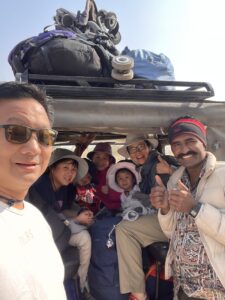
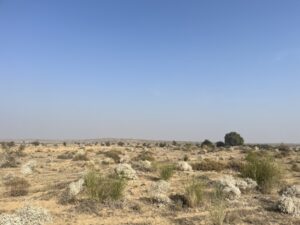
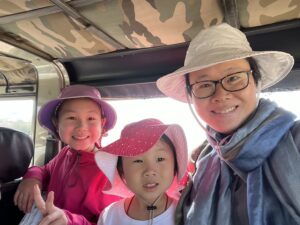
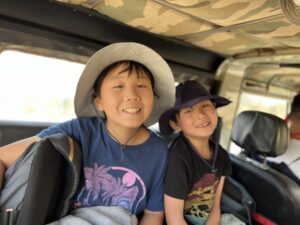

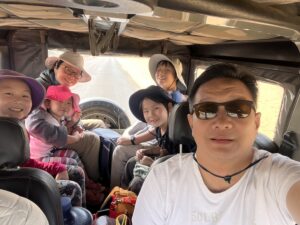



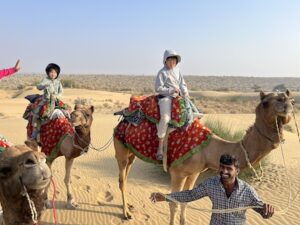


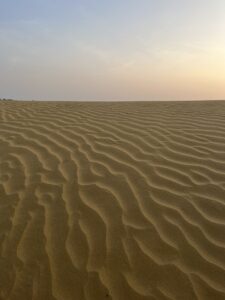

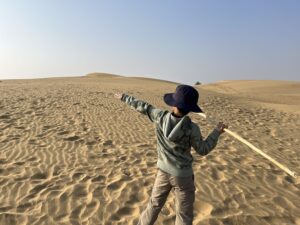

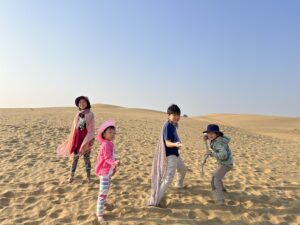

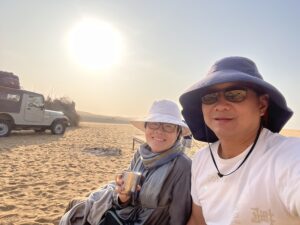
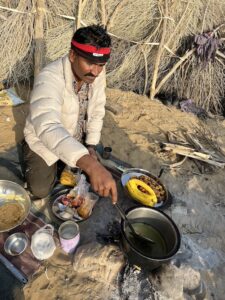
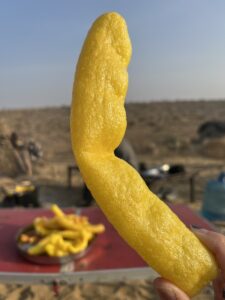

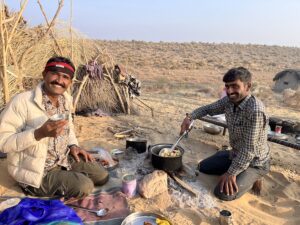

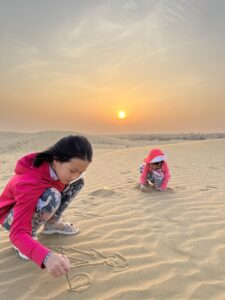

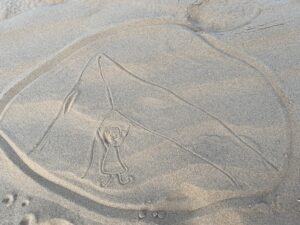


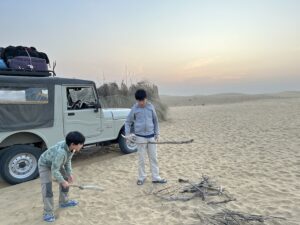
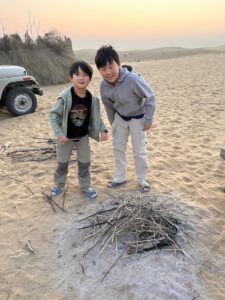
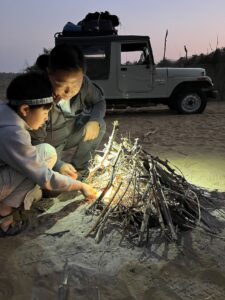


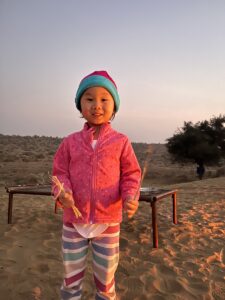
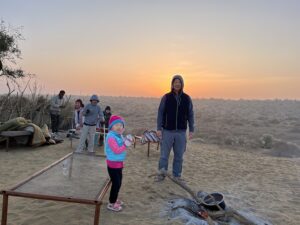



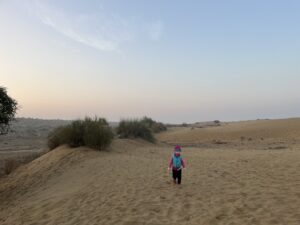
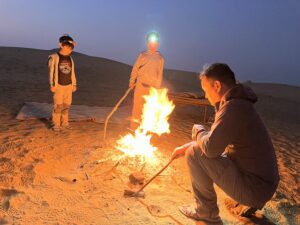
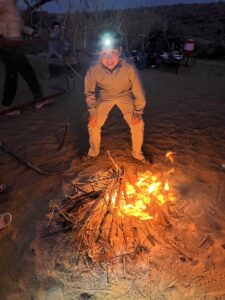
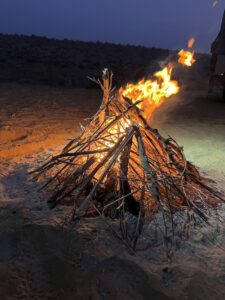
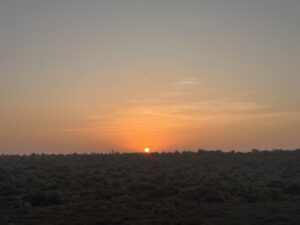
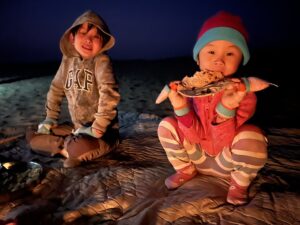
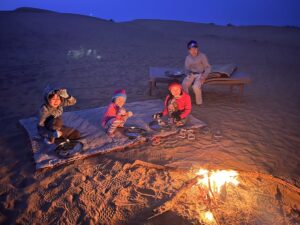
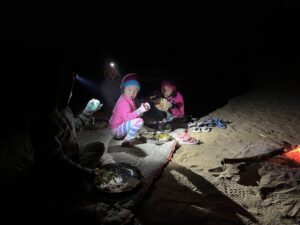

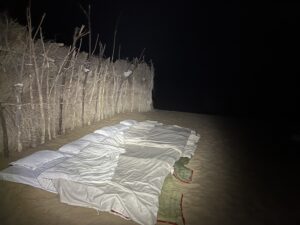
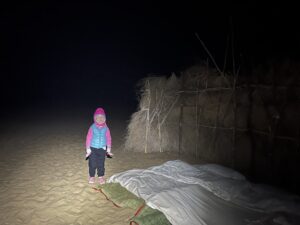

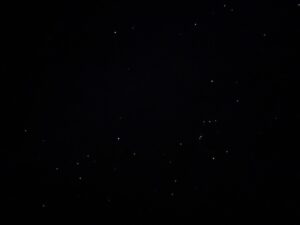
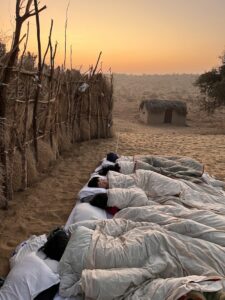
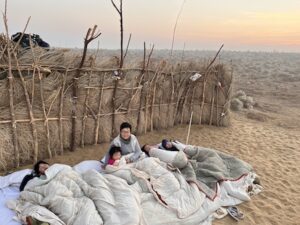



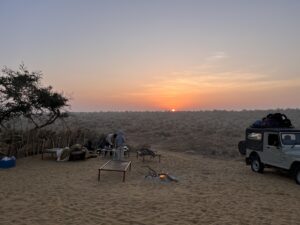
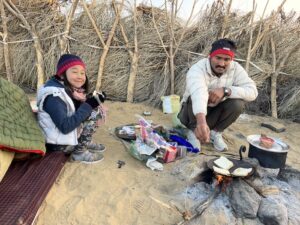
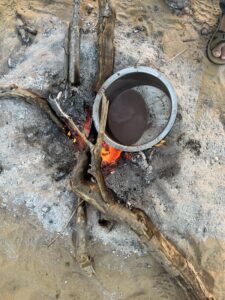

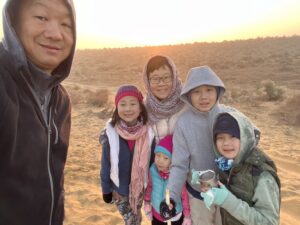
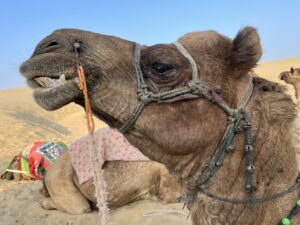
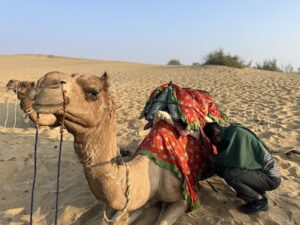


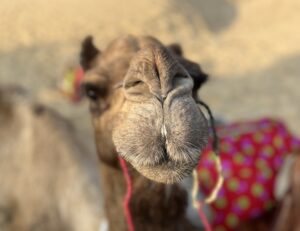



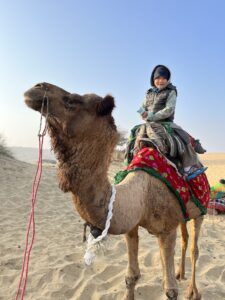

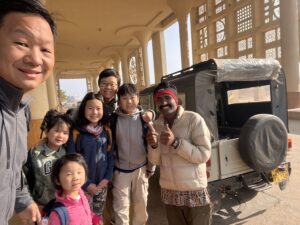
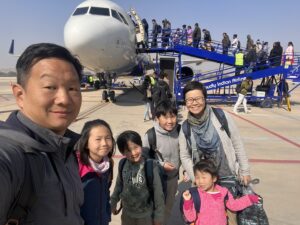
So happy to have read this. It reminded me of my enchanted trip into the thar with Davo and Nabu. I slept in the same spot as you. The food was out of this world and experience waking up to gaze at the stars breathtaking. I vowed to go back to see Nabu and do this again but life got in the way. I will be back again someday. Thank you for this posting. Eric
Hi Eric, thanks for leaving the message. It really was a magical experience, one that is impossible to forget. I hope you make it back to the Thar Desert one day.